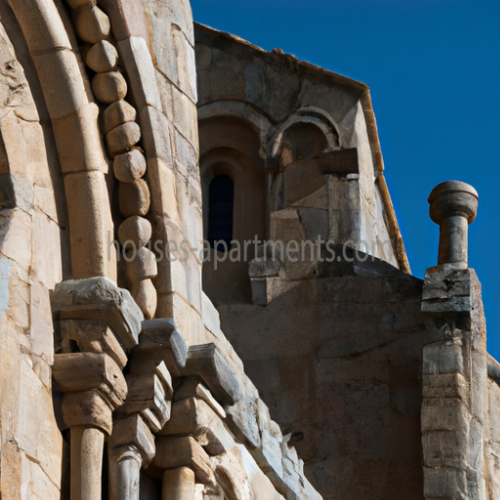Some of the key features of Romanesque architecture are:
1. Use of round arches: Romanesque architecture is known for its use of round arches, which were often used to create barrel or groin vaults.
2. Thick walls: The walls of Romanesque buildings were often very thick, with small windows and few openings, which helped to provide stability and strength.
3. Decorative arcading: Romanesque buildings often featured decorative arcading, which consisted of columns or pillars with arches between them, creating a rhythmical pattern of repetition.
4. Towers and bell towers: Romanesque churches often had bell towers and towers, which were used to house bells, as well as to create a sense of height and grandeur.
5. Sculptural decoration: Romanesque buildings often featured sculptural decoration, including carvings of animals, mythical creatures, and religious figures.
6. Use of stone: Romanesque architecture made extensive use of stone, which was a durable and long-lasting material, and was often used for much of the exterior and interior decoration.
7. Symmetry: Romanesque buildings were usually symmetrical or had a balanced composition, with a central nave flanked by side aisles and transepts, and often a rounded apse at the east end.
8. Byzantine influence: Some elements of Romanesque architecture were influenced by Byzantine styles, such as the use of domed roofs and decorative mosaics.
Publication date:

